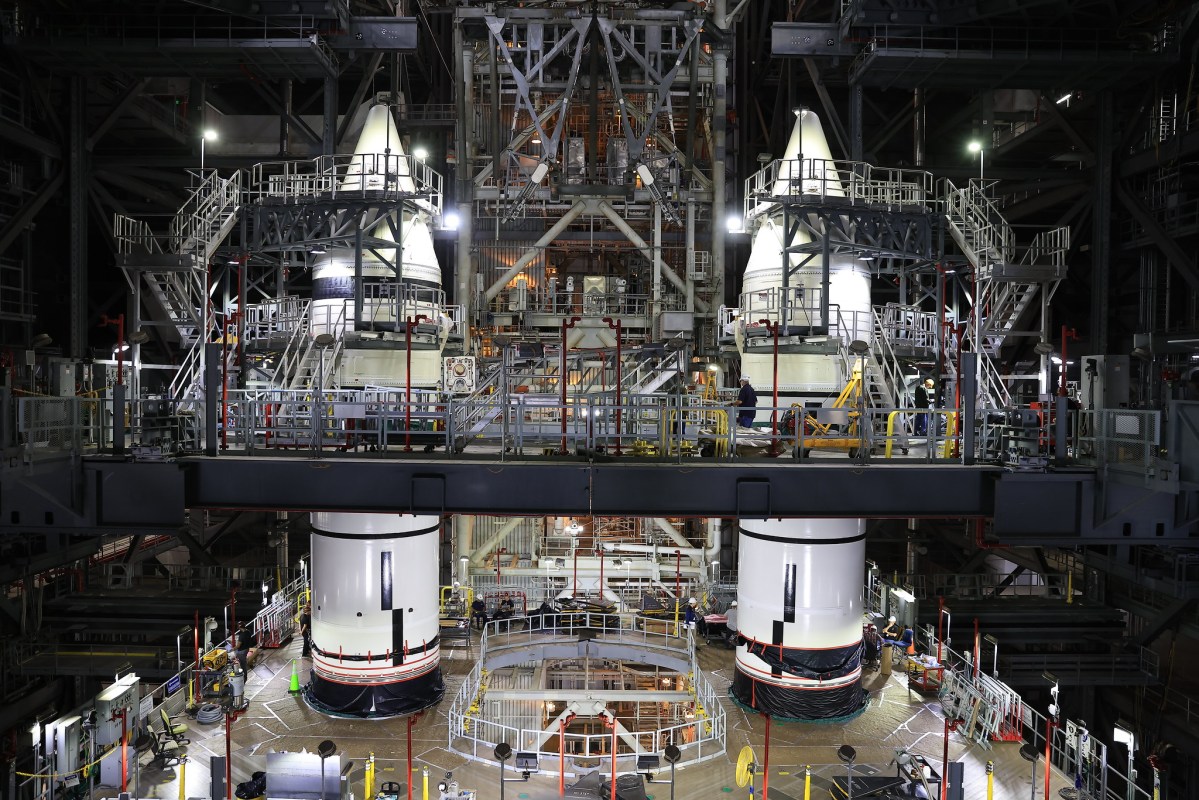When Donald Trump returned to the White House in January, many in the space industry assumed there would be immediate changes at NASA, particularly in its human spaceflight programs. Elon Musk had the ear of the new president and had publicly talked up sending humans to Mars as soon as possible and did so while criticizing how NASA structured its Artemis lunar exploration campaign.
Trump suggested changes himself, when he said his inaugural address that the United States would be “launching American astronauts to plant the Stars and Stripes on the planet Mars.” He used similar language in a joint address to Congress in early March, in neither case mentioning the moon.
Bad news, it seemed, for Artemis.
But, more than two months into the new administration, the reality has not matched the rhetoric. Instead, that reality has been taking shape at the Kennedy Space Center, where the components of Artemis 2 — a mission some thought might not survive the initial weeks of the new Trump administration — are coming together. Since Jan. 20, workers have completed the stacking of the twin five-segment solid rocket boosters for the Space Launch System (SLS) and attached them to the core stage inside the Vehicle Assembly Building. Workers are also preparing the upper stage for installation on top of the core stage.
Several kilometers away, the Orion spacecraft that the SLS will launch, with four astronauts on board, is also going through its final checks. NASA and industry officials were eager to show off the progress on both SLS and Orion during a media day in early March, saying the mission was on track to launch in about a year.
“Our focus has been pressing ahead with the missions we have on the books,” Howard Hu, NASA’s Orion program manager, said in an interview when asked about possible changes to Artemis. “We all have a desire to go to the moon and get our astronauts there as soon as we can.”
Any significant changes to these plans would have to overcome opposition in Congress, where the Republican leaders of key space committees have signaled their desire to keep a human return to the moon on track. “My top priority is ensuring that U.S. astronauts return to the lunar surface and that we do so before the CCP,” or Chinese Communist Party, Rep. Brian Babin (R-Texas), chairman of the House Science Committee, said in a conference speech in February.
In March, a bipartisan group of senators introduced a NASA authorization bill. It includes language calling for “continued development of space exploration elements” required for Artemis, including SLS and Orion. If that wasn’t clear enough, another section of the bill is titled “Reaffirmation of the Space Launch System.”
The bill, said its lead sponsor, Sen. Ted Cruz (R-Texas), chairman of the Senate Commerce Committee, “takes the first step towards returning America to the moon.”
The new administration missed other opportunities to make quick, major changes, allowing passage of a full-year continuing resolution that keeps NASA programs funded at 2024 levels. Its choice for NASA administrator, Jared Isaacman, remains on the sidelines awaiting a confirmation hearing by Cruz’s committee.
That doesn’t mean that there won’t eventually be changes to Artemis. At a House Science Committee hearing in February, Scott Pace, former executive secretary of the National Space Council, recommended NASA pursue an “off-ramp” from reliance on SLS, citing work on commercial heavy-lift vehicles, but suggested that SLS continue to be used for at least Artemis 2 and 3.
There is also plenty of time for the new administration to reshape human spaceflight. For example, it took the Obama administration a year before it proposed canceling the Constellation program, setting up a long fight with Congress that, ironically, ended up creating SLS.
All of this depends, however, on if President Trump is that interested in major change.
“There’s a lot of interest in going to Mars,” he said in a Fox News interview a few days after his speech to Congress. “Is it number one on my hit list? No. It’s not really.”
It will be tough enough going back to the moon, let alone Mars, without more enthusiasm.
This article first appeared in the April 2025 issue of SpaceNews Magazine.

